#shamans
Photo

Mihaly Hoppal Shamans Symbols
3K notes
·
View notes
Text
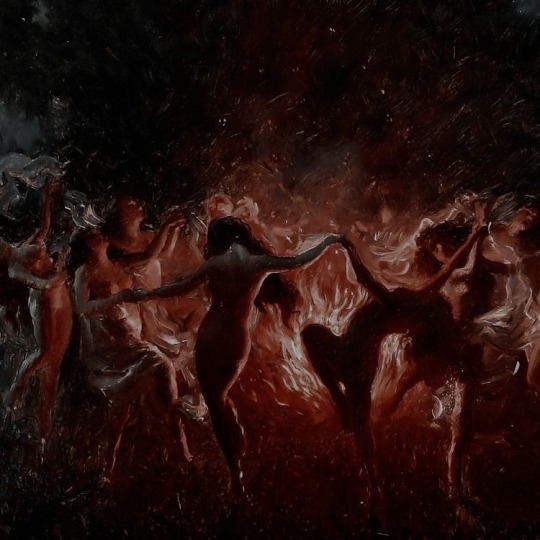


#gg3cc3#themouthofthehell#art#shamans#ayahuasca#dmt#soul molecule#lsd#magic mushsrooms#amanita muscaria
1K notes
·
View notes
Text
What Shamanism Is Not

When people ask me if I can define what shamanism is, I like to begin by defining what it isn't. Sometimes it is easier to contrast something with what it is not than to define exactly what it is. So in that vein, shamanism is not:
Religion. It is important to highlight that shamanism is not a religion, which involves a set of organized beliefs, practices, and systems that most often relate to the belief and worship of a controlling force, such as a personal god or another supernatural being. In an organized religion, belief systems and rituals are systematically arranged and formally established, typically by an official doctrine (or dogma), a hierarchical or bureaucratic leadership structure, and a codification of proper and improper behavior. Unlike religion, shamanism has no dogma, no religious hierarchy, and is a cross-cultural tradition characterized by direct revelation and hands on experience. Shamanism is based on the principle that innate wisdom and guidance can be accessed through the inner senses in ecstatic trance. No intermediary such as the church or priesthood is needed to access personal revelation and spiritual experience. The essence of shamanism is the experience of direct revelation from within. Shamanism is about remembering, exploring, and developing the true self. Shamanism places emphasis on the individual, of breaking free and discovering your own uniqueness in order to bring something new back to the group.
Psychology. Psychology is the scientific study of the mind and behavior. Psychologists endeavor to understand the motivations and intentions inherent within a person's mental and emotional behaviors. It does so by uncovering the hidden agendas and issues at play in a persons actions and choices. Shamanism acknowledges the value of the psychological perspective, however, it does not seek to understand a person's underlying issues and intentions. That is best left to trained psychologists. Indeed, from the shamanic perspective--which is to say a soul-centered perspective, rather than a mental perspective--it is understood that the inner state of the soul is expressed as thoughts, feelings and emotions in the outer, physical realm. The mental and emotional conditions are but the symptoms or manifestation of the inner state of the soul. Shamanism is a paradigm of self-empowerment, which enables people to engage the soul in ways that foster its growth and evolution.
Metaphysics. Metaphysics is the branch of philosophy concerned with the fundamental nature of reality and being. The perspective of metaphysics is that everything has a function or purpose and its essential nature is to grow and achieve its purpose. It explores abstract concepts such as cause and effect (karma), the nature of time, the existence of God, the meaning of life, the relationship between mind and body, and the existence of free will. Unlike metaphysics, shamanism is based in personal accountability without the imposition of an all-powerful God or theoretical universal laws that dictate the circumstances of our lives. Shamanism is premised on spiritual sovereignty free of karmic reward and punishment. When presented with a situation, shamanism never endeavors to find what the lesson is, understand its purpose, or comprehend the meaning. Instead, practitioners seek to apply their knowledge and skills to resolve the situation. Practitioners employ time-tested methods for altering consciousness to find clarity and solve problems.
What Shamanism Is
Shamanism is a cross-cultural, spiritual path practiced in every continent of the world. It is the most ancient and most enduring spiritual tradition known to humanity. It predates and constitutes the foundation of all known religions, psychologies and philosophies. It originated among nomadic hunting and gathering societies. These ancient shamanic ways have withstood the tests of time, varying little from culture to culture. Over thousands of years of trial and error, primal peoples the world over developed the same basic principles and techniques of shamanic power and healing.
Shamanism represents a universal conceptual framework found among Indigenous tribal humans. It includes the belief that the natural world has two aspects: ordinary everyday awareness, formed by our habitual behaviors, patterns of belief, social norms, and cultural conditioning, and a second non-ordinary awareness accessed through altered states, or ecstatic trance, induced by shamanic practices such as repetitive drumming. The act of entering an ecstatic trance state is called the soul flight or shamanic journey, and it allows the journeyer to view life and life's problems from a detached, spiritual perspective, not easily achieved in a state of ordinary consciousness.
The shamanic practitioner traverses the inner realms in order to mediate between the needs of the spirit world and those of the material world. It is an inward spiritual journey of rapture in which the practitioner interacts with the inner spirit world, thereby influencing the outer material world. From a shamanic perspective, all human experience is self-generated. Experience is shaped from within since the inner world is a microcosm of the outer world. Each human being is a hologram of the universe. Essentially, we are the universe experiencing itself in human form.
#shamanism#consciousness#shaman#shamanic drumming#shamanic practice#shamanic journey#shamans#spirituality
33 notes
·
View notes
Text
Gender fluidity and spirituality came together with the priestly Enaree, spiritual practitioners who played a fundamental role within ancient Scythian culture, engaging in orgiastic rituals!
24 notes
·
View notes
Text
Chiara Baldini is currently running a gorgeous, image-saturated course for ADVAYA.LIFE on Dionysus: Rave, Ritual and Revolution.
She delves into the mythological, historical and anthropological dimensions of the Dionysian cult, a cultural lineage that accompanied Western history since primordial times. One that defines our identity in deep resonance with other non-Western cultures and can support us in rediscovering meaningful aspects of European and, more specifically, Mediterranean indigeneity.
This is part of her PhD work at the California Institute for Integral Studies and a longtime fascination of hers.
XLE.LIFE's Kai Altmann is enrolled and enthralled in the course as a guest.
ADVAYA.LIFE offers regular free webinars, paid courses and meetup events, with a primary hub in London. Focusing on ideas around spirituality, culture, history and theory, they present comparative lectures and exploratory discussions on pressing de-colonial and holistic issues, featuring some of the world's leading thinkers on the topics. Vandana Shiva and Timothy Morton have been recent presenters!
(Bursaries are available for the courses, apply at their site.)
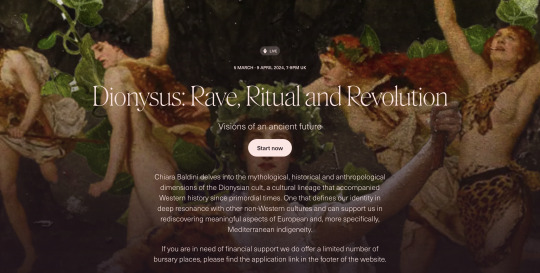
#advaya#advaya.life#chiara baldini#rave#revolution#ritual#dionysus#minoan#pagan#pre-patriarchal#fertile crescent history#indigineity#queerness#pre-western#feminist#shamans#ecstatic#ecstatic dance#mediterranean#crete#greece#rome#xle#xle.life
6 notes
·
View notes
Text

✨𝘉𝘰𝘶𝘭𝘥𝘦𝘳 𝘖𝘱𝘢𝘭✨
✧ On its own, Opal is well-revered. Throughout history, early humans thought of it as a mystical “night stone” that glowed in the confines of pitch-black caves. Eventually, it took on a meaning of mysticism and power. Many civilizations thought it held the remnants of spirits.
✧ Boulder Opal is unique in its own right. Miners first discovered it in 1870 in Australia. To this day, most of the Boulder Opal on the market is found in Western Queensland.
✧ Shamans & Healers believe that the overarching meaning of Boulder Opal is betterment. Its energy is about improving your life and chasing your dreams.
#boulderopal#gem stones#metaphyics#metaphysical#healingproperties#shamans#australia#gems and minerals#stones#lapidary#rockhound#gemcutting#earthenergy
10 notes
·
View notes
Text
I have seen the worst and the best in humanity. Nothing surprises me anymore.
#feelings#dead poets society#dark academia#literature#newjourney#belief#success#socialconnection#writings#dark academic aesthetic#chaotic academic aesthetic#chaotic aesthetic#rumi#shamans#writers of tumblr#women writers#elif şafak
26 notes
·
View notes
Text


“Revenge was the only thing she had.”
#reading#books read in 2023#bookblr#books#book photography#book blog#bibliophile#the dragon republic#rf kuang#r.f. kuang#poppy war series#second book#really loved this#ya fantasy#chinese history#war#gods#shamans#fantasy#friendship#death#grief#rage#feminine rage#better than the first book#4.3 stars#review#can’t wait for the last one#april reads#ahead of schedule
12 notes
·
View notes
Text
⭐ (FRIDAY TALE) 𝑨 𝒄𝒐𝒏𝒗𝒆𝒓𝒔𝒂𝒕𝒊𝒐𝒏 𝒘𝒊𝒕𝒉 𝒕𝒉𝒆 𝑫𝒆𝒗𝒊𝒍
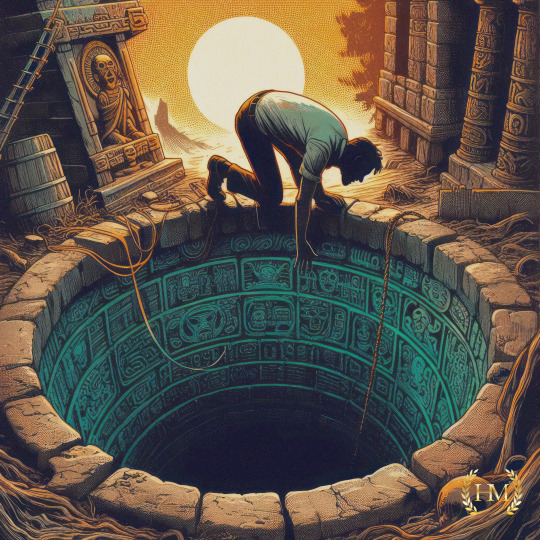
Guillermo Zavala was a genuinely curious man, Mexican, and inquisitive since childhood. As a child, he became known among friends for often getting into trouble by poking his finger where he shouldn't. Now, at 26, he was a recently graduated medical professional from a college in Mexico City, and his curiosities had evolved into something more "scientific."
He couldn't exactly pinpoint when the idea to determine if the devil was real took root in his mind. Perhaps it began when he was a child, and the priest spoke to him and other kids during catechism about evil and Satan. Maybe it was during his teenage years when he witnessed a shooting, and the mother of the deceased cried out, "The devil killed my son!" Nevertheless, Guillermo harbored this incredible obsession for so long that one day, he decided to embark on a quest to find the devil. He delved into books, consulted priests, local witches, shamans, and even individuals in asylums across Mexico. However, despite his efforts, he never discovered how to locate the devil. One day, while searching for new books on the topic, he stumbled upon an old one written by Padre Alonso de Salazar, a priest who accompanied the conquistadors in Mexico. The priest described an ancient place, a peculiar well that natives used to communicate with the "other side," a place he believed connected with the devil. According to the book, the well was sealed with stones. Using old maps, Guillermo located the place in the north area of the city, reopened it, and found only a black vertical tunnel seemingly without end.
Perhaps out of a sense of adventure or his usual curiosity, Guillermo yelled into the well, "Hey Satan, are you here?" In that moment, a growl echoed from the hole, and a voice responded, "I'm." Guillermo's face turned pale as he asked, "Satan, give me proof that you exist!" The voice simply replied, "No." Guillermo pressed further, "Why, Satan?" The voice explained, "Because I don't exist anymore." When Guillermo asked for clarification, the voice responded, "I went away a long time ago, giving my place to all of you. Why bother when you are better than me at doing my job? You're my favorite show on my TV," followed by a laugh. In that moment, the well slid down, closing the hole forever.
On his way home, Guillermo bought a newspaper, and as he read the headlines, he pondered that the devil was right; humans had surpassed him a long time ago.
#HELMORT#devil#Mexico#curiosity#obsession#quest#shamans#priests#conquistadors#history#indigenous#spirituality#folklore#evil#sin#humanity#philosophy#psychology#society#culture#morality#ethics#values#introspection#selfreflection
2 notes
·
View notes
Photo
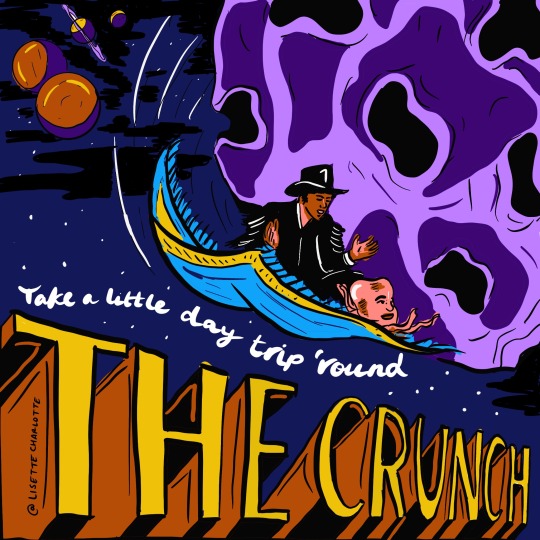
Sometimes I forget I make a thing, then I find the thing, and I’m impressed at the thing. This was going to become a colour by numbers, hence the limited colour palette.
Here’s my travel poster for The Crunch, which I’ve never even been to.
#mighty boosh#the mighty boosh#richard ayoade#vince noir#noel fielding#the crunch#naboo#shamans#tony harrison#saboo#you know nothing of the crunch#take a little day trip round the crunch#we can all go as tourists#never even been to the crunch
33 notes
·
View notes
Text
Mage Path: Thyrsus

Shamans, Ecstatics, Stewards, Blood-Wise, Thyrsi
The Thyrsus represent a mystical path that focuses on the interconnected arcana of Life and Spirit, but they face challenges when delving into the arcanum of Mind. Often referred to as the Shamans on the Path of Ecstasy, they are the esteemed Scions of the Watchtower of the Singing Stone, dwelling in the enchanting Realm of the Primal Wild, known as the Kingdom of Totems and Abode of Beasts. Their magical essence centers around the theme of Instinct, while their emotional state embodies the essence of Passion. In their pursuit of magic, they find their way through the concepts of Boundaries and Intercession.
Characteristics
Mages who Awaken with a connection to the realm of the Primal Wild tap directly into the ancient forces of vitality that underlie creation. Their very hearts beat in sync with the world's pulse, and their passion and vigor distinguish them from other Awakened individuals. Emphasizing impulse, instinct, and primal urges, Thyrsus mages often experience intense emotions, with some possessing better control over their passions than others. Those who manage to rein in their impulses can blend into society like any other mage, but those who choose isolation grow unaccustomed to wearing society's polite facade, finding it difficult to interact with others. Consequently, such secluded mages are candid in their assessments of others, whether it involves criticism or appreciating physical beauty.
Once a Thyrsus mage focuses on something, their intensity becomes unmatched, leading others to feel uncomfortable with their laser-like dedication. Despite potential inconvenience, this unyielding focus also makes those on the Path of Ecstasy highly diligent in their chosen tasks. When a mage on this path invests themselves in a pursuit, they do so wholeheartedly, even to the point of being considered obsessive by some.
To Thyrsus mages, the body is sacred, akin to a temple. They possess an innate understanding of how to maintain their bodies in prime condition. Physical flaws like paunches, allergies, warts, or acne are non-existent for them. Their skin remains clear and taut, their eyes bright, and their muscles firm beneath the skin. While they continue to age, youth and health persist in Thyrsus mages well into their later years. Even at an age over a century, they appear as vigorous as a 60-year-old.
Shamans exude an "earthy" quality, being practical and no-nonsense individuals. They possess the keenest understanding of the physical realities of human existence among all the Awakened. Thyrsus mages harbor no shame or concern about bodily functions, discussing them openly. This unpretentious attitude can make Sleepers and other mages uncomfortable with the Thyrsus approach to life.
Style
Ecstasy holds a profound significance for those who undergo Awakening on the Thyrsus Path, which aptly bears the name "Path of Ecstasy." Some among the Awakened may not fully grasp the true essence and potential of ecstasy or its connection to magical practice until they embark on the Thyrsus Path. The state of ecstasy sought by many Thyrsus mages serves as a means to transcend or bypass conscious thought. By attuning their minds to the primal and untainted "frequency" of the Primal Wilds, they become impervious to judgment, illusions, or other vulnerabilities associated with conscious thinking. Through this connection, the Thyrsus mage rises above mere physicality and becomes one with the broader world.
To the Thyrsus, the Material and the Shadow realms are intertwined elements of a unified whole. They perceive all things as imbued with life and breath, with even immaterial objects housing thriving spirits. These beings exist in interconnectedness, forming a vast superorganism of sorts, where songlines reveal themselves during moments of Ecstasy. These songlines later rearrange akin to an ever-transforming nerve system, emphasizing the dynamic and living nature of their reality.
Philosophy
Thyrsus mages possess an insightful grasp of the Greek concepts of Bios and Zoë, understanding both the fragility of individual life and the indomitable tenacity of the life force itself. They bear witness to the intricate dance of spirits that underlies all natural phenomena and life, observing how this ephemeral dance manifests physically in the world. With unmatched clarity, Thyrsus mages comprehend the consequences of vices and habitually steer their lives towards sources of vitality. They attune themselves to the pulse of the world's rhythms—the ebb and flow of the moon, the changing seasons, the chirping of crickets, and the beating of hearts. However, city life often thwarts their sensitivity, leading some to misconstrue their wisdom as eccentricity or madness. The Thyrsus mages perceive themselves as the sturdy roots that support all branches of magical knowledge, holding the most fundamental secrets of life and the animating forces that give it meaning.
Embracing the ways of nature, Thyrsus mages acknowledge that there is no inherent right or wrong, only consequences. This understanding leads to a reputation for amoral behavior among some of them after Awakening. Moral considerations do not burden them, and they shed societal hang-ups concerning the natural world. For them, sex becomes passionate play, untethered from unnatural moral strictures or expectations. Likewise, they can adopt an amoral stance towards killing, viewing it with a perspective similar to that of a predator's hunt. While they do not kill for enjoyment, they do not shy away from it when necessary. Thyrsus mages recognize that death is an integral part of the predator-prey cycle, and they accept that one day, they too will be prey rather than predators. This profound understanding fuels their passionate approach to life. They acknowledge their place in the food chain, understanding that any predator, no matter how fierce, will eventually become prey when age or weakness catches up with them.
#chronicles of darkness#mage#mages#mtaw#mage: the awakening#mtaw thyrsus#mage the awakening#thyrsus#shaman#shamans
4 notes
·
View notes
Text
Contexte
Les vagues accrochent et écument le rivage, les pieds dans le sable chaud, les yeux perdus sur les eaux calmes de l'océan. Au loin des bateaux naviguent, se laissent porter par les flots. Mais ces navires ne sont pas n'importe lesquels : ils font rêver chaque homme et chaque femme de l'archipel… Les vivenefs sont magiques. Fabriquées en bois sorcier elles transportent les équipages des marchands à travers les sept mers. Leur figure de proue s'anime, pense et ressent. Un véritable guide à travers les eaux parfois violentes, un guide pour leur capitaine et son équipage. Mais dans l'archipel un vent de rébellion gronde, ceux qui n'ont pas la chance d'être marchands reconnus, deviennent des forbans, des corsaires sans foi ni loi, des pirates qui pillent tout sur leur passage, des contrebandiers qui n'hésite pas à doubler les marchands dans leur quête de richesse. Dans l'ombre, les sirènes et les tritons réclament leur dû. Les dragons ont disparu au cours d'une guerre à laquelle ils ont participé pour sauver les humains. Mais depuis plus rien… Prisonniers, esclaves, ils se cachent, tentent de survivre. Enfin c'est sans compter les shamans, ordre magique désorganisé qui s’immisce dans la vie de l'archipel… saurez-vous trouver votre place ?
3 notes
·
View notes
Text
What is the significance of plant medicine in shamanism ? Shamanism In India
Plant medicine has a long and cherished history in shamanism, and continues to be a vital part of this ShaGuru’s Shamanism today. Throughout shamanic practices, plants are used to promote balance and equilibrium in the human spirit. www.ShamanismInIndia.com

In Shamanism plant medicine is used for healing and to induce altered states of consciousness. It is believed that consuming plant medicines can help to open the mind to spiritual communication and to connect with the spiritual realm. Plants can be used to induce visions and aid spiritual practices like astral projection, dowsing and scrying. Certain plants such as ayahuasca (banned in India), serve as powerful tools for self-exploration, healing and personal growth. They can also be used in rituals and ceremonies to provide participants with a heightened awareness of the spiritual world.
During ShaGuru’s Shamanism transcendental ceremonies, shamans use plants to stimulate spiritual communication. The effects of the plant medicines, combined with the spiritual guidance of the shaman can lead participants into deeper realms of consciousness to explore ancestral wisdom and divine guidance.
Furthermore, plant medicines can be instrumental in the spiritual healing of individuals. The active components found in plants are believed to clear energy blockages in the body, allowing the body’s natural healing processes to kick into action.
Plant medicine is also used to connect participants with their ancestral wisdom and the natural cycles of life. It helps to foster balance, harmony and connection with the environment, as well as opening up energetic pathways to promote healing. Plant medicine is, undoubtedly, an invaluable part of the shamanic experience.
For Shamanism courses/healing visit www.ShamanismInIndia.com
or Call/WhatsApp on +91 9867772848
#shamanism#shamanismcourses#shamans#shamanisminindia#shamanismbyshaguru#shamansinindia#shaguru#plant medicine
3 notes
·
View notes
Text
The Riddle of the Saxony-Anhalt Shaman
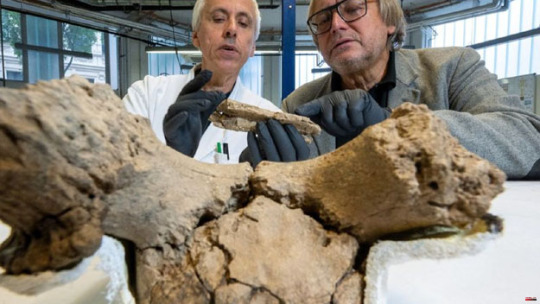
The 9000-year-old grave of a shaman in Saxony-Anhalt, Germany has so far posed many mysteries. Now a team of experts has gained new insights into this. "The shaman's grave is a key find that provides deep insights into the beginnings of spirituality and religion and shows the central role women played in prehistory," says state archaeologist Harald Meller, who coordinates the project. "Thanks to the detective work of many scientists, we can reconstruct the fate and appearance of a unique woman."
He presents the results in the book "The Riddle of the Shaman. A Journey to Our Archaeological Beginnings", written together with the historian Kai Michel. The grave in Bad Durrenberg (Saalekreis) was accidentally discovered in 1934 during sewer works. The woman was around 30 to 35 years old. In her arms she held an infant. A headdress made of deer antlers and numerous animal teeth is interpreted as part of a shamanic costume.
What archaeogenetics can achieve today
Bones were found during the 2019 excavations, which made it possible to determine the identity of the child. "Thanks to the Max Planck Institute for Evolutionary Anthropology in Leipzig, we now know it was a boy," says Meller. "But he wasn't her son." The case is an impressive example of what archaeogenetics can do today. "Their founder, Svante Pääbo, rightly received the Nobel Prize for medicine," says the state archaeologist.
The shaman comes from a time when dense primeval forests covered Europe after the Ice Age. "The living environment, which was radically changed by the climate, presented people with enormous challenges," explains Michel. "The shaman was a spiritual specialist who used the spirits to help people and heal others." She was so successful that people made pilgrimages to her from far and wide.
She was buried in an octagonal tomb. "It's extraordinary. In general, it's the richest grave of its time," says the state archaeologist. "We can show that it was visited centuries later."
67 notes
·
View notes
Text



Dimitar Karanikolov, "imaginary shamans"
"These shamans don’t exist in real life, but through artificial intelligence and Midjourney, a chat-powered text-to-image generator, architect and travel photographer Dimitar Karanikolov has brought them to life as realistic portraits for his series ‘Imaginary Shamans’. Karanikolov tells designboom that all these portraits are generated based only on descriptions and words.
‘In order to have a more controlled result, I was very specific and described a lot of the details I wished to see in the final image – the age, the clothes, the ethnicity, to name a few. I have also specified the camera settings – or the virtual lens I wish to use – the light scenario, and the framing."
source designboom
12 notes
·
View notes
Text

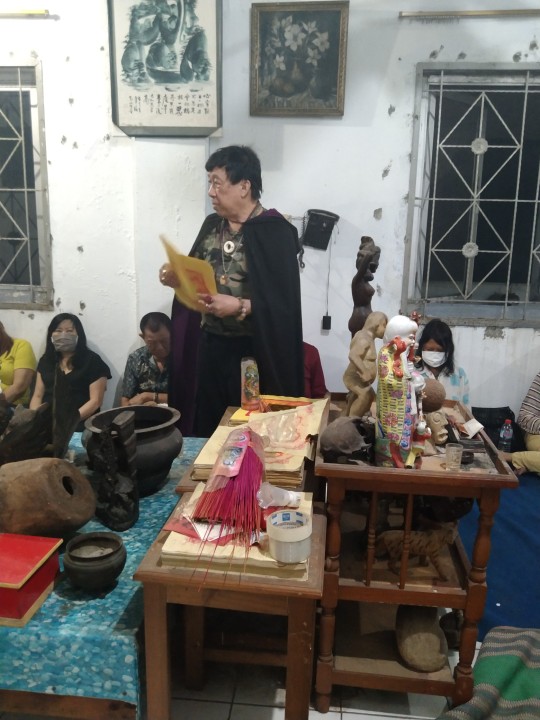
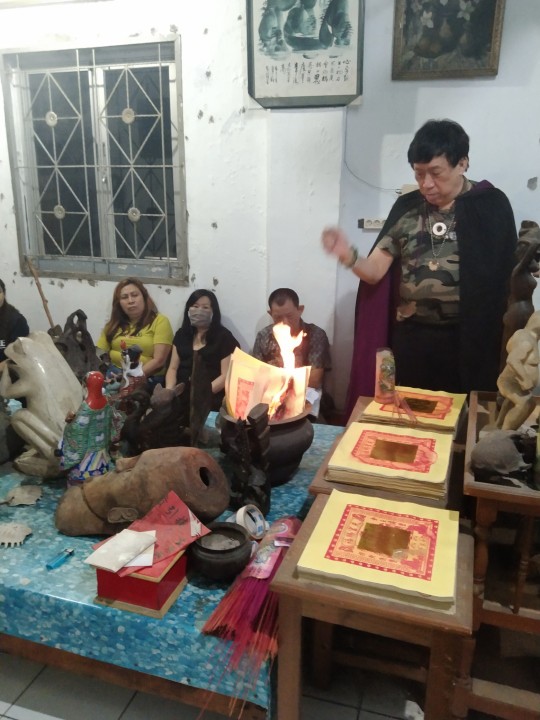
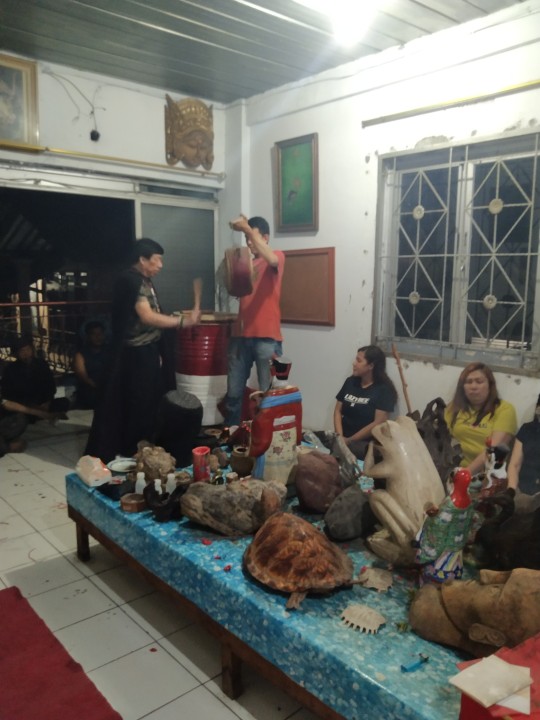



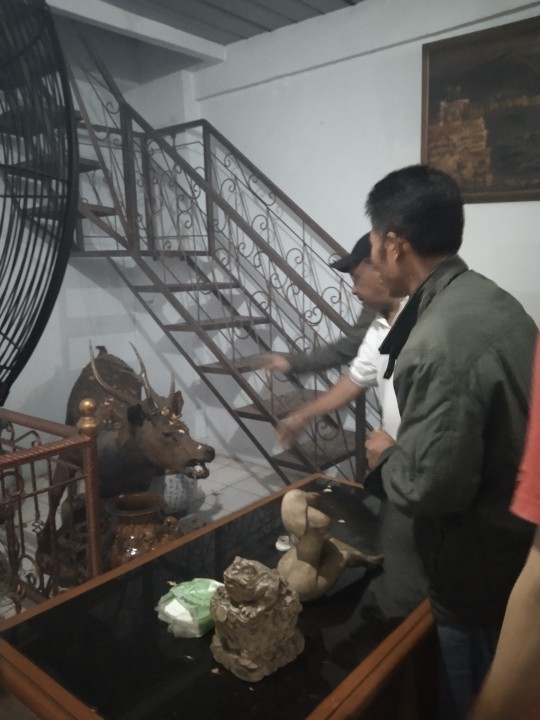


From our last Friday magic ritual called " Mimbar Holistika" part 2
#psychic#spirituals#spiritual#spiritualists#spiritualist#spiritualism#spirituality#occult#occultism#occultists#occultist#witch#witchcraft#witchy#witchery#shamanism#shamanic#shamans#shaman#paranormal#supernatural#magic rituals#magic ritual
5 notes
·
View notes